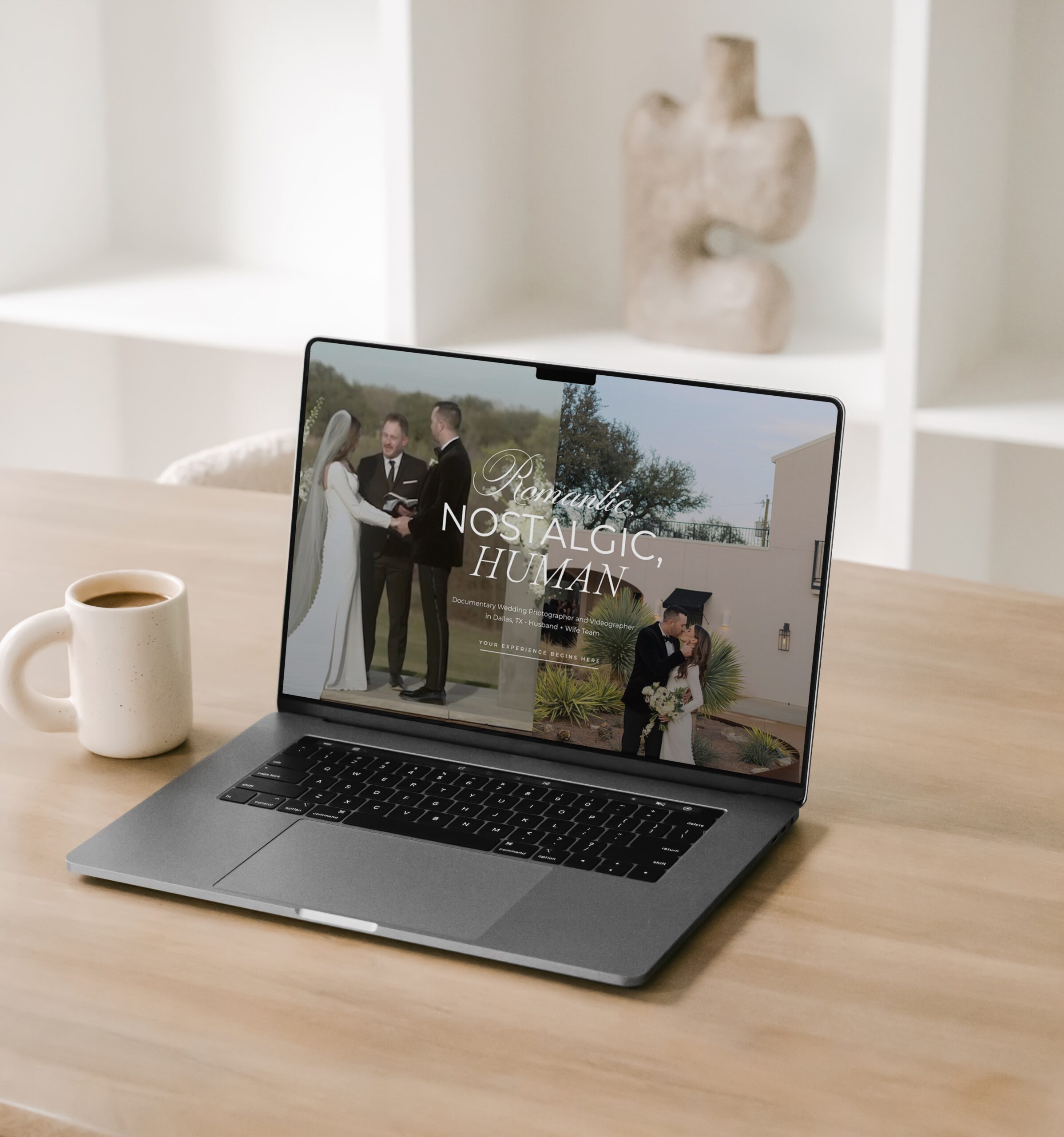Designing your own website is exciting — you finally get to bring your vision to life, show off your brand, and share your work with the world. But if you’ve ever sat down to actually do it, you know it’s not always as easy as dragging and dropping things into place.
As a website designer, I’ve worked with dozens of small business owners who started out DIYing their websites. And while I love the DIY spirit (hey, I was once there too!), I also see the same mistakes over and over again. The good news? They’re all fixable.
Today I’m breaking down the 10 most common website mistakes I see DIYers make — and exactly how to fix them. By the end, you’ll feel more confident about your site and know how to avoid the pitfalls that can cost you clients.
Mistake 1: No Clear Call-to-Action (CTA)
If someone lands on your site, what do you want them to do? Book a call? Buy a product? Join your email list?
Too many DIY sites skip over this and leave visitors guessing.
Fix it: Add one main CTA that appears multiple times throughout your site. For example, “Book Your Consultation” or “Shop the Collection.” Keep it consistent, clear, and easy to click.
Mistake 2: Using Too Many Fonts
I get it — fonts are fun! But mixing six different ones makes your site look messy and unprofessional.
Fix it: Stick to 2–3 fonts max: one for headings, one for body copy, and maybe an accent font for special touches. You can find beautiful, free options on Google Fonts, or check out FontPair for curated pairings that work well together.
Mistake 3: Poor Quality or Inconsistent Images
Photos are one of the first things people notice on your site. Dark, blurry, or mismatched stock images can make your brand feel less trustworthy.
Fix it: Use high-quality photos that reflect your brand’s style. If you can, invest in a brand photoshoot — it’s worth every penny. If not, browse free stock libraries like Unsplash or Pexels to find cohesive images that fit your brand.
Mistake 4: Weak Navigation
Ever land on a website and feel like you’re wandering in circles? That’s what happens when navigation isn’t clear.
Fix it: Limit your main menu to 4–6 links max. Prioritize the most important pages: Home, About, Services/Shop, Blog, and Contact. Everything else can live in dropdowns or your footer.

Mistake 5: Forgetting About Mobile Design
More than half of web traffic today comes from mobile devices. But many DIYers only design for desktop, leaving their site awkward or unreadable on a phone.
Fix it: Always preview your site on mobile while you’re building it. Tools like Responsinator let you see how your site looks across different devices.
Mistake 6: Walls of Text
You know what no one wants to do? Scroll through a never-ending block of text.
Fix it: Break up your copy with short paragraphs, headers, bullet points, and plenty of white space. Your visitors will thank you.
Mistake 7: No Social Proof
If you don’t have testimonials or client logos on your site, you’re missing a major trust-builder.
Fix it: Even if you’re just starting out, gather kind words from clients, collaborators, or colleagues. Tools like Google Forms make it easy to collect testimonials, and you can display them with simple sliders or grids right on your homepage.
Mistake 8: Ignoring SEO Basics
Search engine optimization (SEO) can feel overwhelming, but ignoring it means people may never find your site.
Fix it: Start simple:
- Use keywords in your headlines and page titles (try Ubersuggest for keyword ideas).
- Add alt text to your images.
- Write clear meta descriptions.
- Create a blog to share helpful content (like this post 👋).
Mistake 9: Slow Loading Speed
If your site takes forever to load, people will leave before they even see it.
Fix it: Compress images before uploading them with tools like TinyPNG or ShortPixel. You can also test your site’s load time with Google PageSpeed Insights.
Mistake 10: Trying to Do Everything
DIY sites often suffer from “more is more” — too many colors, too many graphics, too many words.
Fix it: Simplicity wins. Choose a consistent color palette, streamline your layouts, and focus on guiding visitors toward your main call-to-action. For color help, I love Coolors for quick, cohesive palette ideas.
Ready to Fix These Mistakes for Good?
If you saw yourself in a few of these, don’t worry — you’re not alone. That’s exactly why I created the Website Design Ultimate Checklist.
It’s a free, step-by-step guide to help you build a site that feels professional, polished, and ready to impress. Think of it as having a designer (me!) by your side, walking you through the essentials so you don’t miss a thing.
👉 Download the Ultimate Website Checklist here and take the guesswork out of your website design.
Want a Head Start?
If you’re DIYing your site but don’t want to start from scratch, check out my Showit Template Shop.
Each template is professionally designed, easy to customize, and built with all the best practices baked in (so you don’t have to worry about navigation, structure, or page flow). Just add your photos, copy, and colors — and you’re ready to launch a site you’re proud of.

Final Thoughts
Your website doesn’t have to be perfect from the start — but avoiding these common mistakes will save you time, frustration, and lost clients down the road. With the right tools (like my checklist and templates), you can DIY a website that truly reflects your brand and helps you grow your business.
